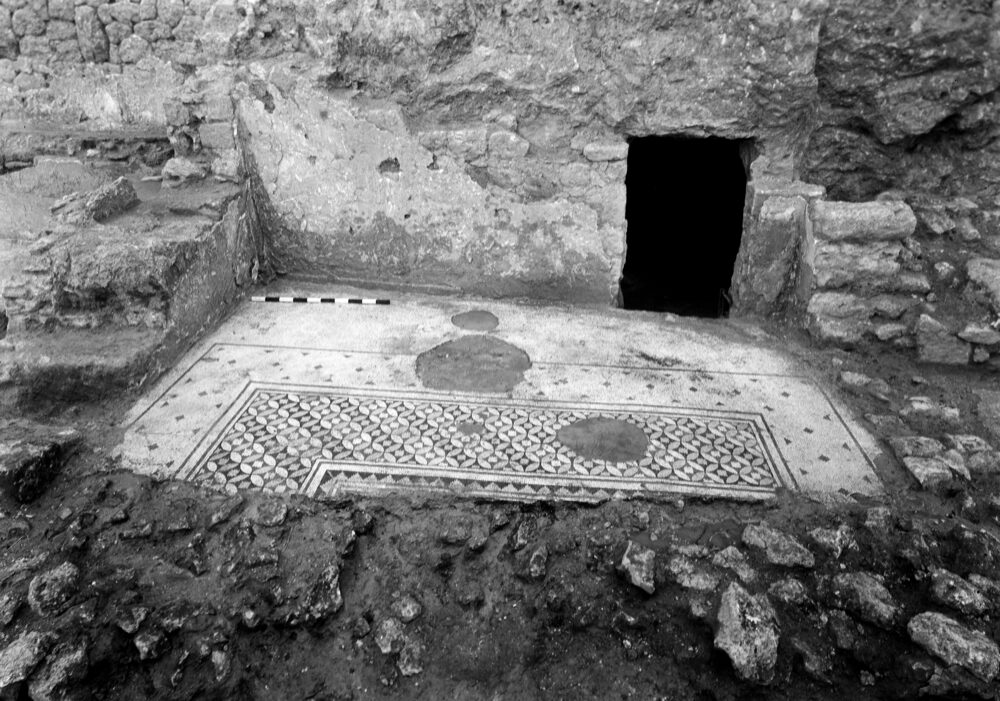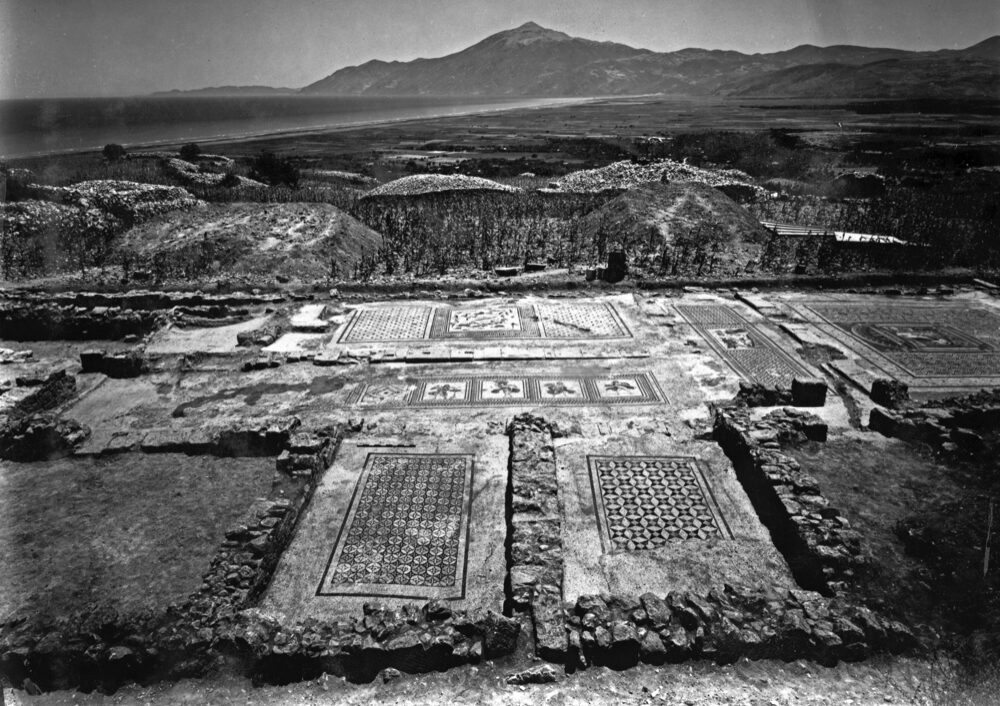The forecast called for rain showers, but the sun shone brightly on the curious onlookers gathered just outside the Museum of Fine Arts, St. Petersburg. As MFA senior curator Michael Bennett reminded the crowd, we had come together for an auspicious occasion, so perhaps the sunshine was a sign that “the gods are smiling.” If so, they no doubt also appreciated the fanfare trumpeted by the Florida Orchestra and the seven ceremonial shovels of dirt that heralded the official kickoff of the museum’s newest project: “Antioch Reclaimed: Ancient Mosaics at the MFA.”
What was Antioch?
Founded by one of Alexander the Great’s generals, the city of Antioch (in present-day Turkey) flourished as a trade and culture center for the Greek and then Roman worlds. By the first century of the Common Era, this diverse, cosmopolitan, and wealthy city rivaled Rome, Constantinople, and Alexandria for importance. It increasingly served as a crossroads between Eastern and Western cultures, including its place as an early center for Christianity. By 600 CE, ravaged by earthquakes and unrest, it had lost its former glory. Few traces remain of the once-great city, but the MFA is providing a tangible connection between then and now.

What is “Antioch Reclaimed”?
Eighty years ago, excavation at the site of the ancient city (now buried under centuries of river sediment) unearthed nearly 300 mosaics. In the mid-1960s, the MFA bought five of them as part of Its newly launched antiquities collection. This acquisition made the museum one of only about 30 institutions in the United States to have such relics. In the 1980s, two of these mosaics were buried in the northeast lawn and another in the base of the sculpture-garden fountain. Why? No one is sure, but in March 2018, the process began to reclaim and reunite the five. The effort will unfold in three steps. First, an open-air excavation will unearth the buried mosaics. Next, they and their stored companions will be restored. Finally, all five of the artifacts will be placed on exhibition.

What is an ancient mosaic?
Mosaics are essentially paintings created by assembling pieces of colored materials such as stone or glass. Between 100 and 300 CE, Antioch’s population, which topped half a million people, included many wealthy Romans. Like many of us today, they strove to fashion beautiful homes. Mosaics that depicted people, places or patterns were essential elements of these opulent Roman abodes. The fragments at the museum (the largest is 8 feet by 6 feet) decorated different rooms. They have wonderfully descriptive names, like “House of the Evil Eye” and “House of the Drinking Contest.”

Are We Excited? YES!
Clearly, some cultural elements have survived across time. It’s fun to think: “Romans: They’re just like us!” But our connections run deeper than merely our love for a good drinking game. As Bennett noted, “Great art has no expiration date. …It is not bound by culture or time.” It connects us to each other and to other times and places and can help to cultivate a sense of empathy for previous civilizations.
Want to Help?
Kristen Shepherd, executive director of the museum, remembers the garden-fountain mosaic from her childhood trips to the museum. She was excited to learn about the existence of the four others after her appointment to the leadership position last year, and her enthusiasm was the spark that launched the yearlong campaign to reclaim them.
For more information or to donate to the project, please visit the MFA website: http://mfastpete.org/antioch-reclaimed-ancient-mosaics-at-the-mfa/



